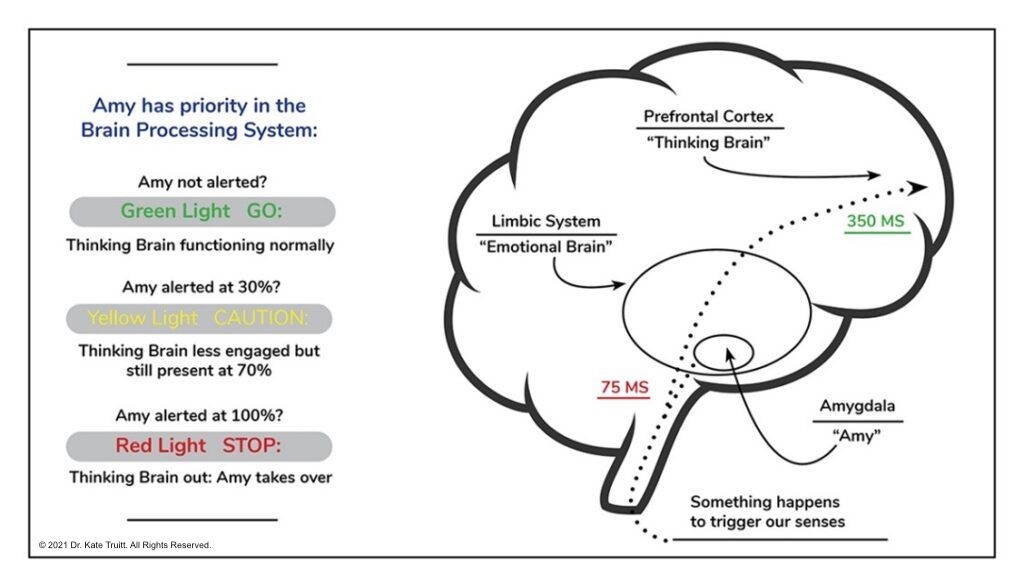In this video Dr. Kate invites you into a deeper understanding of how our fear brain impacts our ability to be our best selves on a day-to-day basis. There’s even a PowerPoint! When we are living in a state of increased tension, stress, anxiety, or fear our amygdala may start to play an overwhelming role in how our brain interprets information in our world. In these moments even the most neutral stimuli may be met with agitation, frustration, or anxiety. Have you ever overreacted to an incoming text message or someone’s tone of voice? Us too! That’s the impact of the amygdala on our brain functioning. In this series of videos, you will learn all about our dear survival-based friend “Amy” the Amygdala and the fierce protective role she plays in keeping us alive as well as how to help her not just slow down but also heal.












